“LANKY’S AQUINCUM”
Psychedelia, both recreationally and visually, redefines nostalgia through involuntary memory that though distorted and hallucinatory, can transport the consumer into profoundly detailed images of their childhood. One setting that remained a constant fixture in my childhood was filled with all the sensory eccentricities that served as a playground for a child’s imagination and as a fascinating realm of rediscovery in early adulthood. It was a house whose interior held artifacts that transformed it into another universe, a condensed cross-cultural exile that cradled many of the countries its inhabitants came from, mainly of Central/Eastern Europe. There were Matyo embroidered napkins, Herend porcelain, folkloric figurines, kaleidoscopic Ottoman rugs, antique satin chairs, and a series of regal painted portraits depicting my ancestors. The most striking and glamorous of these portraits was of my great-grandmother Lenke, a Hungarian aristocrat; which was complemented by one I observed to be of a similar nature, also in a seated position and in a pink dress, that of my grandmother Edelgard. These portraits serve to represent two time periods in a complimentary fusion, the way that the American psychedelia of the 1960s echoed the Art Nouveau/Jugendstil world of turn-of-the-century Austria-Hungary. The color pink and the representation of flowers in both traditional peasant embroidery and psychedelic “flower child” imagery was also significant in bridging together the delicate blossoming femininity of one time period to the burgeoning sexuality of the other, further developed by the decorative masculinity of military outerwear as well as more vulgar interpretations of Sexual Revolution themes.
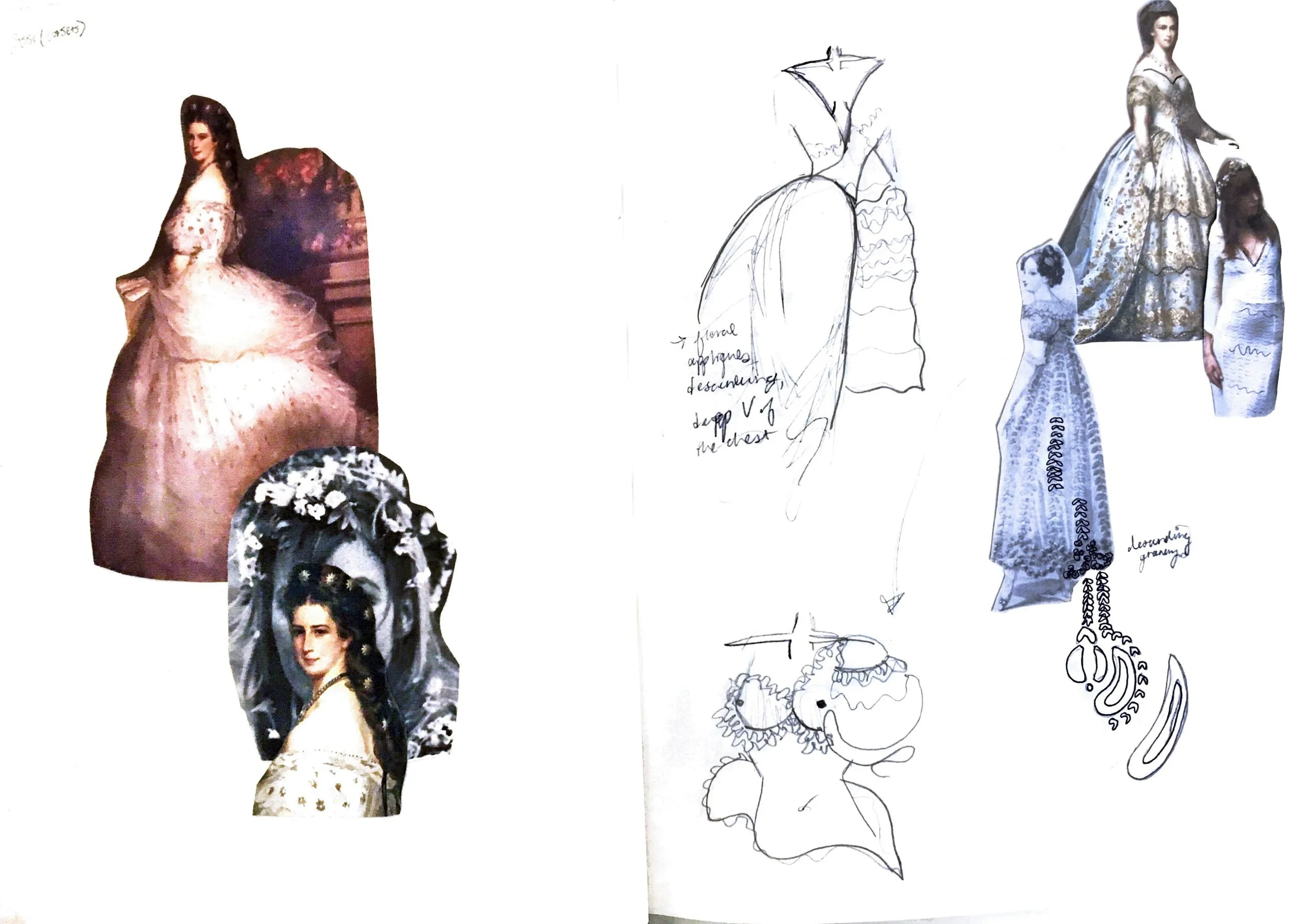
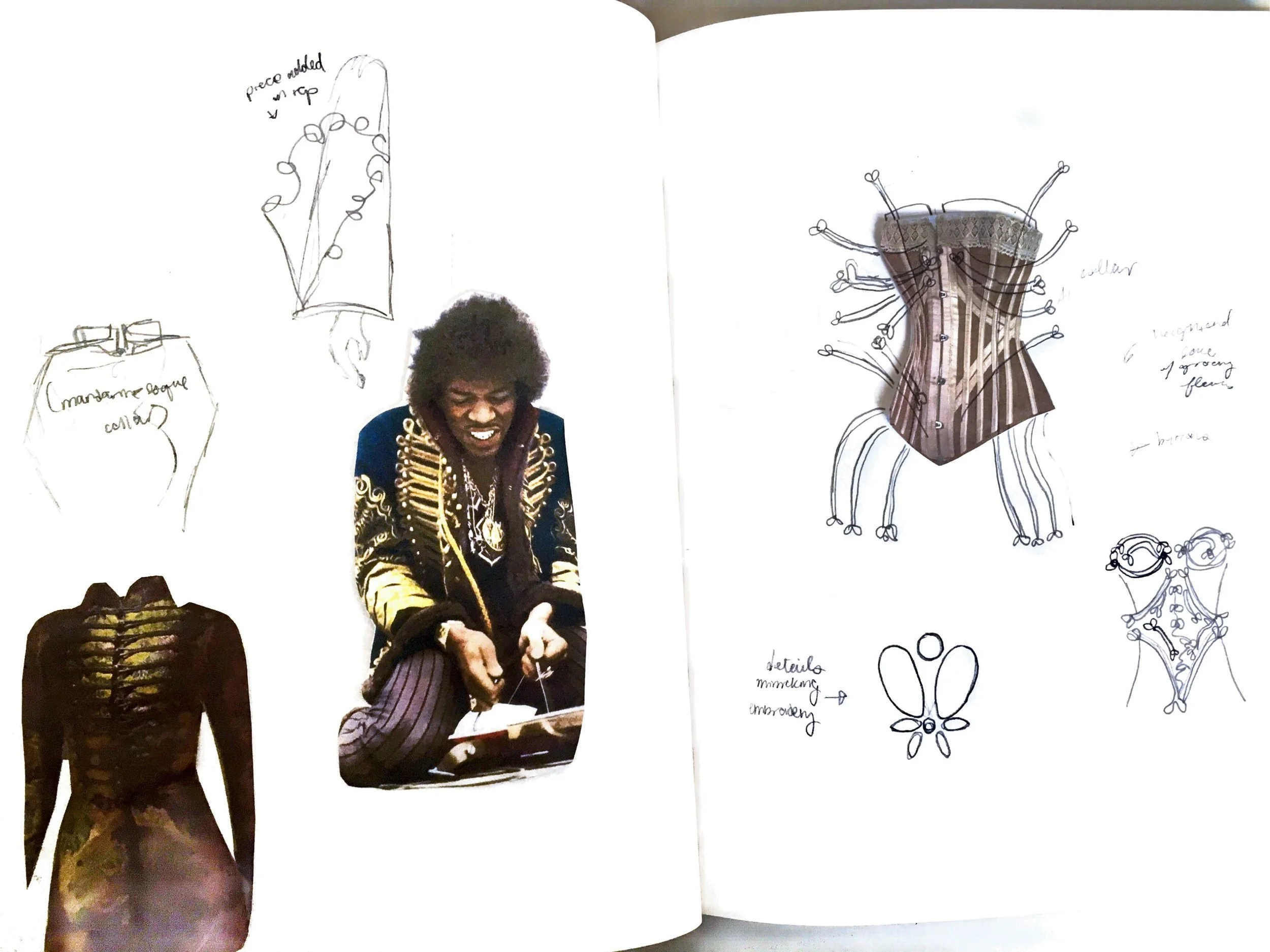
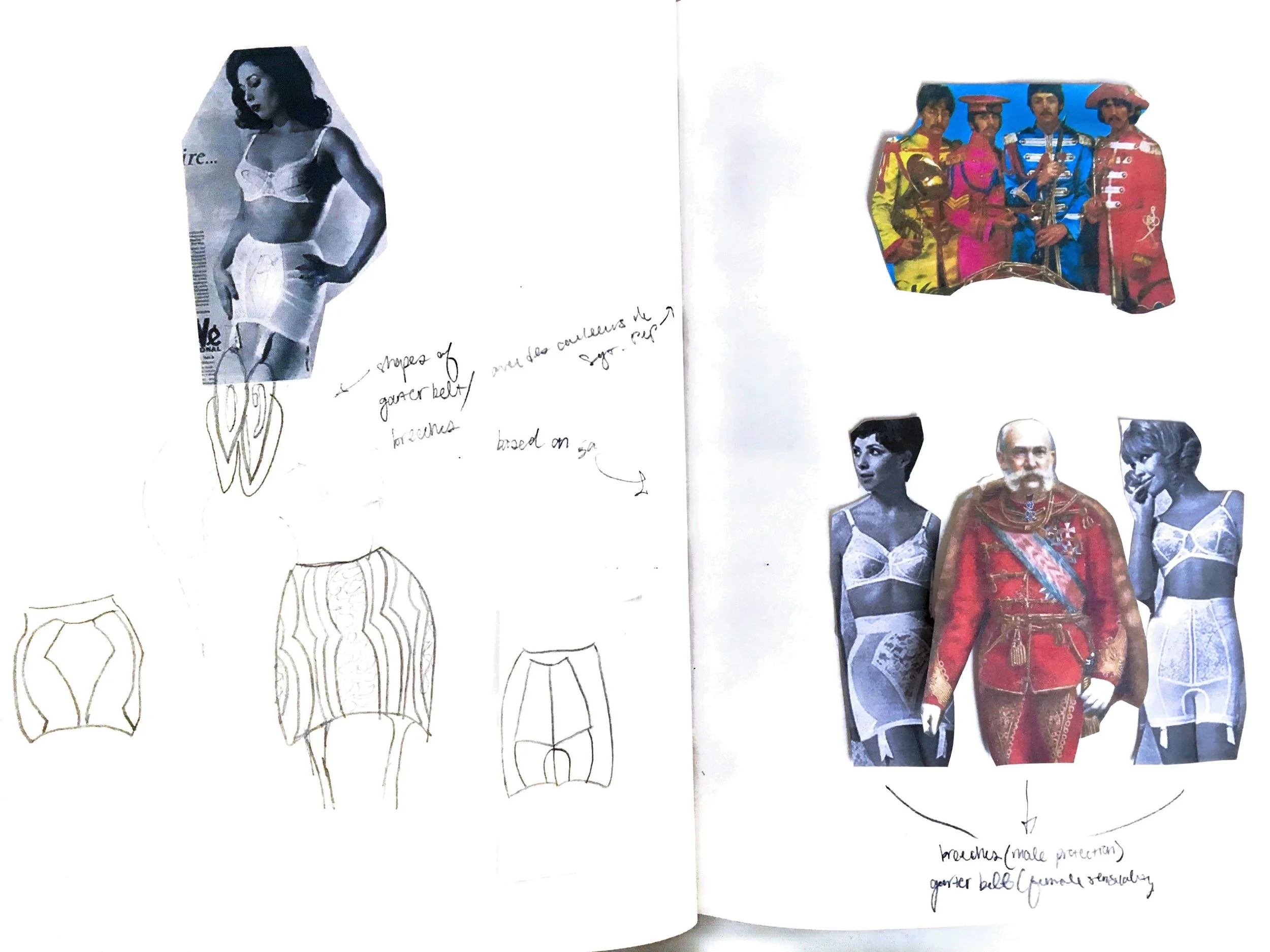
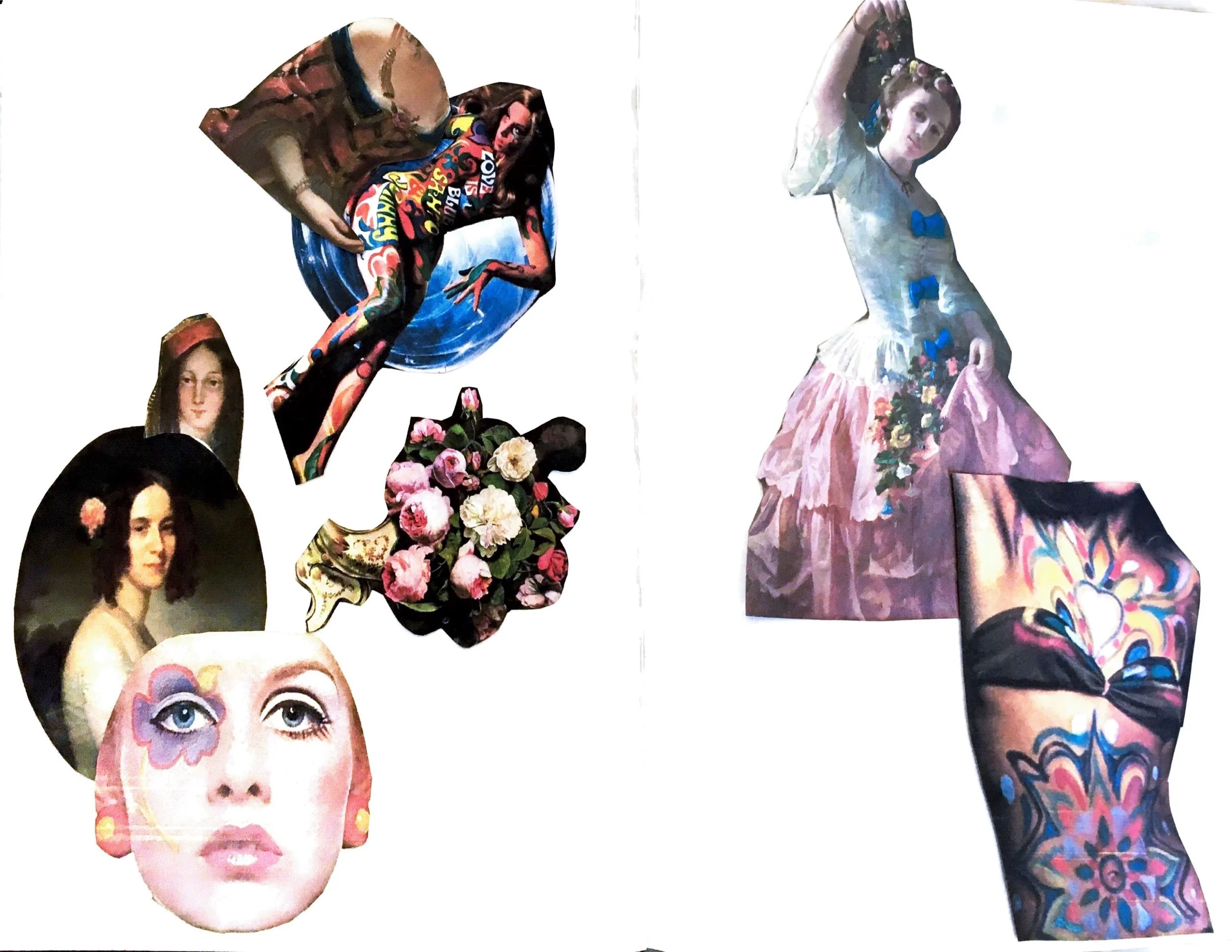
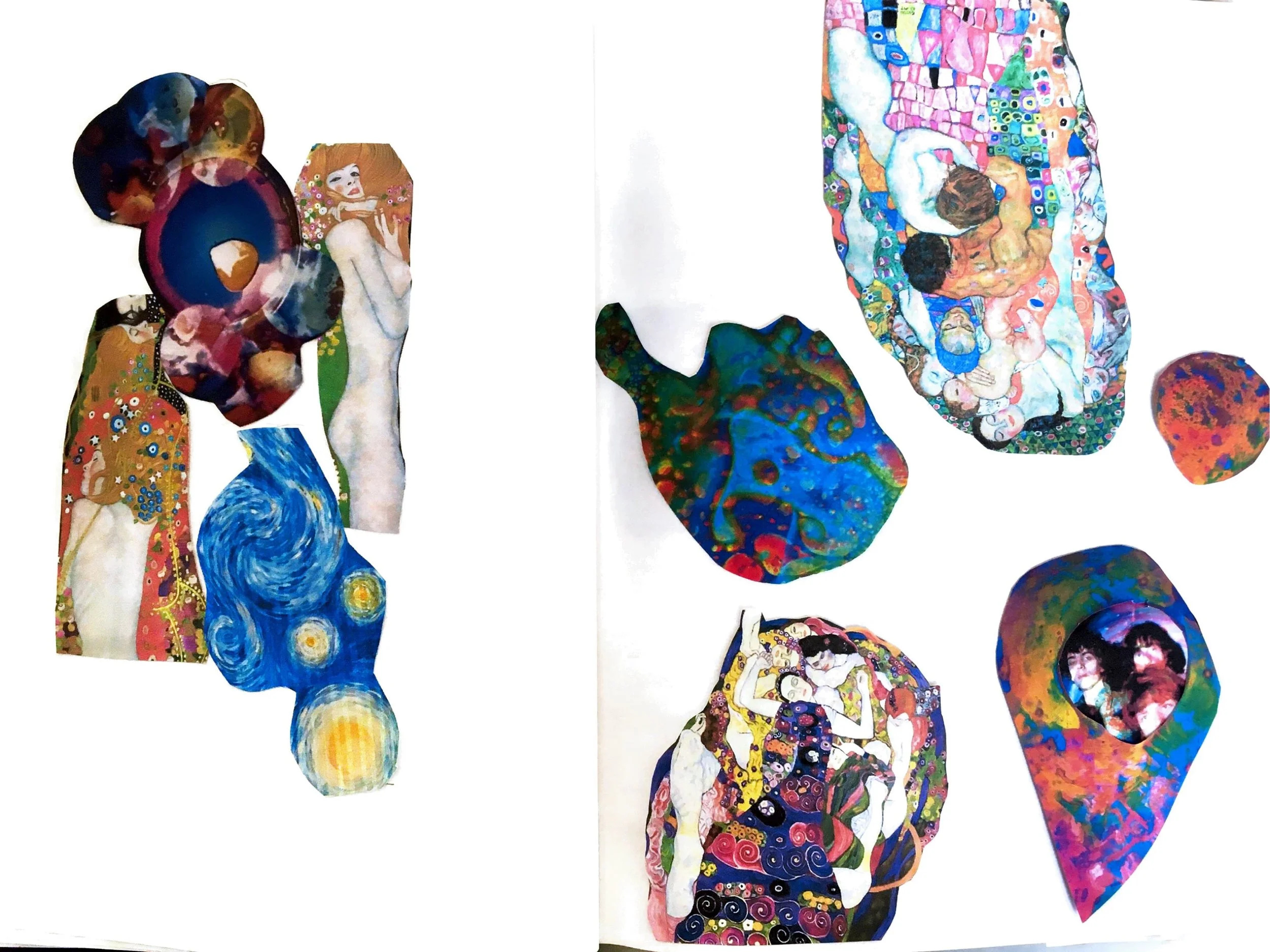

This collection follows “LANKY” and her weeklong liberation spree to reclaim her empire. Born into isolation and exiled on an island within the city taken a century earlier from her familial dynasty, she seizes her womanly coming of age and sexual naivete as a means of becoming a revolutionary. She uses sex and other stimulants from the local flowering plants to initiate guerrilla warfare in the name of feminist nationalism.






